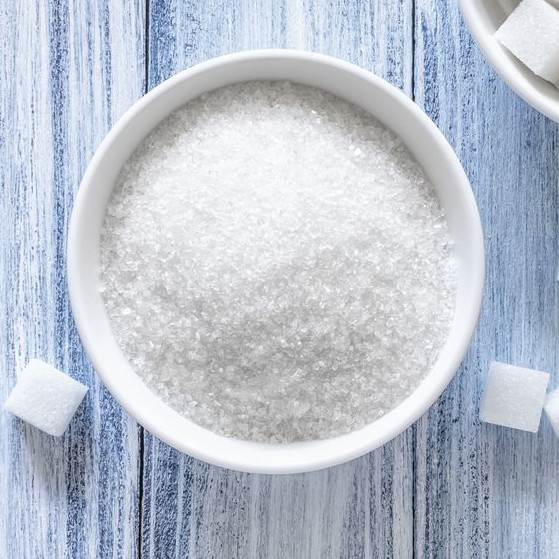Recognizing the Crucial Methods and Technologies Employed in Modern Walking Stick Sugar Handling
The advancement of walking cane sugar processing has been dramatically shaped by the combination of advanced methods and modern technologies that resolve both effectiveness and sustainability. Enzyme-assisted removal and innovative refining methods have changed return optimization, while automation helps with functional integrity. Additionally, the focus on sustainable techniques mirrors an expanding awareness of environmental effect. As we discover these crucial improvements, it comes to be vital to check out just how they not only improve manufacturing yet additionally straighten with broader market fads and consumer needs, raising inquiries concerning the future of sugar handling and its effects for international markets.
Historical Context of Walking Cane Sugar Handling
The historic context of walking stick sugar processing discloses an abundant tapestry of farming technology and social exchange that has actually formed its growth over centuries. The process of extracting and improving sugar acquired momentum in India, where approaches for formation were refined around the Sixth century.

Advanced Extraction Methods
Effectiveness in walking stick sugar removal has seen substantial innovations, driven by the demand for greater returns and lower manufacturing costs. This strategy not just raises sugar yield yet also reduces the energy required for processing.
Furthermore, the adoption of membrane purification modern technologies, such as nanofiltration and reverse osmosis, has changed the splitting up of sugar from pollutants. These approaches permit the discerning permeation of sugar particles while preserving bigger impurities, improving the extraction process and reducing waste.
Furthermore, the integration of continuous extraction systems has actually led to improved operational performance. Cane Sugar Processing. These systems keep a consistent circulation of walking stick material, making sure optimum extraction problems and decreasing downtime connected with batch handling
Cutting-edge Refining Technologies
Refining methods in cane sugar handling have undergone a transformative shift, driven by the demand for greater pureness and enhanced item high quality. One of one of the most noteworthy innovations is the fostering of membrane filtering technologies, such as ultrafiltration and nanofiltration. These procedures efficiently get rid of impurities and colorants without the demand for extensive chemical therapies, thereby protecting the sugar's natural flavor and boosting its appeal.
Another considerable advancement is making use of ion exchange materials, which enable for discerning removal of unwanted ions from sugar remedies. This innovation not only enhances the total purity of the final item but likewise adds to minimized waste and environmental effect.
Furthermore, innovations in adsorption techniques, making use of activated carbon and various other advanced products, have verified reliable in decolorizing sugar solutions while preserving optimum quality. The assimilation of these innovative refining innovations makes certain that manufacturers can create refined sugar with remarkable quality and taste, fulfilling the developing preferences of customers.
Automation and Control Equipment
Current developments in refining modern technologies have Click This Link led the way for significant enhancements in automation and control systems within walking stick sugar handling centers. These systems make use of innovative software and equipment to enhance functional effectiveness, lower human mistake, and make certain constant item high quality.
Modern automation incorporates various components, consisting of sensing units, actuators, and programmable reasoning controllers (PLCs), allowing real-time tracking and control of critical procedures. As an example, temperature, circulation, and pressure rates can be precisely regulated throughout removal, information, and crystallization stages, maximizing efficiency and lessening waste.
Additionally, advanced information analytics and machine understanding formulas play an essential function in predictive upkeep, permitting operators to anticipate equipment failings prior to they happen. This proactive strategy not only minimizes downtime but additionally extends the life-span of machinery.
On top of that, automation assists in the implementation of Sector 4.0 principles, empowering sugar mills to attain greater connectivity and data exchange across procedures. As a result, decision-making comes to be more enlightened and dexterous, eventually boosting the general competition of cane sugar manufacturing. With these developments, the market is well-positioned to satisfy expanding international needs while preserving functional excellence.
Sustainability Practices in Sugar Production
Sustainability techniques in sugar production have become significantly necessary as the industry seeks to stabilize financial stability with environmental obligation. As customer recognition grows relating to the ecological impacts of agricultural techniques, sugar producers are go to the website embracing cutting-edge approaches to reduce their environmental impact.
One substantial approach is the application of accuracy farming strategies, which utilize data analytics to enhance source usage, such as water and plant foods. This decreases waste and lessens the influence on local ecological communities. Furthermore, numerous producers are transitioning to renewable resource sources, such as biomass from sugarcane by-products, to power their operations, consequently reducing dependence on nonrenewable fuel sources.
Water monitoring techniques are additionally important; rain harvesting and effective irrigation systems help mitigate water shortage issues. Cane Sugar Processing. Additionally, integrated pest management strategies decrease chemical usage, advertising biodiversity and dirt wellness
Business social obligation efforts are emerging, with business investing in local communities and guaranteeing fair labor techniques. By accepting these sustainability methods, the sugar market not only enhances its reputation but also adds to a much more sustainable agricultural landscape, leading the way for future generations.

Verdict
In summary, modern-day walking cane sugar processing incorporates an array of sophisticated methods and technologies that significantly boost yield, sustainability, and efficiency. Collectively, these developments position the cane sugar market to meet modern demands while addressing vital global obstacles.
The evolution of walking cane sugar processing has actually been substantially shaped by the combination of advanced methods and technologies that resolve both efficiency and sustainability.The historic context of cane sugar processing discloses a rich tapestry of farming development and social exchange that has actually shaped its growth over centuries. Advancements in milling and refining arised, laying the groundwork for modern-day cane sugar processing.Refining strategies in walking cane sugar handling have actually undergone a transformative shift, driven by the need for greater purity and enhanced item top quality.In a knockout post recap, modern walking stick sugar handling incorporates a range of sophisticated strategies and technologies that substantially enhance return, performance, and sustainability.